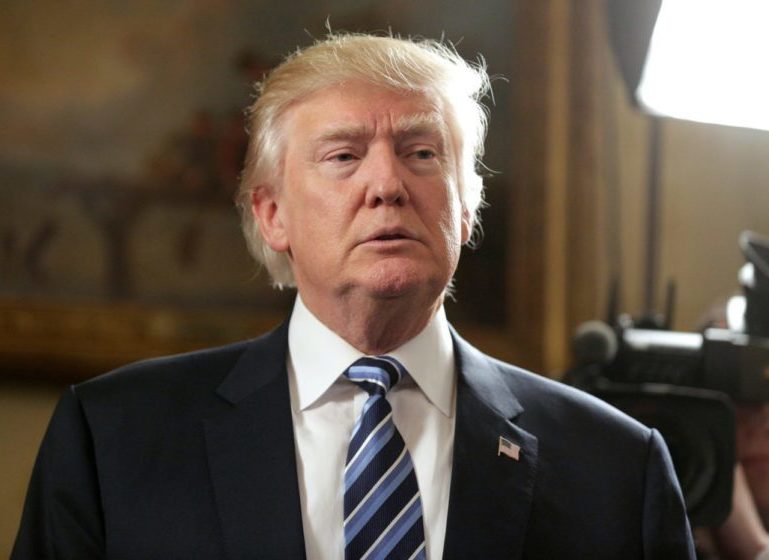
President Trump may know a thing or two about hotel deals, but he totally flubbed the art of the deal with Republicans in Congress as they tried to replace Obamacare.
So did his quarterback in the House, Speaker Paul Ryan.
Above all, they didn’t listen to the people in the red states who got them elected. Their American Health Care Act (AHCA) didn’t help make health care more affordable for resentful middle class voters. Those high costs have robbed each household of several thousands of dollars.
Instead, AHCA tilted toward tax breaks for the wealthy. Who asked for that?
The Achilles heel of President Obama’s Affordable Care Act was its lack of affordability. Yet Ryan and Trump did little to lower health care costs. How could you blow that opening, especially when private businesses have figured out a good number of ways to deflate costs?
Finally, there was no over-arching theme to AHCA. There was nothing the American people could grab onto.
The GOP could have captured hearts, minds and votes by promising a medical home for primary care made available to every American home. Proactive primary care lowers costs by keeping people out of hospitals. They didn’t make any such broad, compelling promise. They played small ball.
They could have required fixed prices for a majority of procedures – the ultimate in transparency. Customers — employees and employers — hate their high, inscrutable medical bills. The GOP didn’t solve that glaring issue.
Republicans could have written provisions to stabilize insurance markets, which are a shambles under Obamacare. They did throw in a last-minute provision for high-risk pools, which would lower premiums by socializing catastrophic coverage. But it came too late.

As for their ground game in Congress, they obviously did not have game plan that moved the chains. Unlike President Obama and Nancy Pelosi in 2010, Ryan and the president didn’t build coalitions to back their bill. Who was for it?
And Trump’s entrance into the fray was amateur hour. One of the fundamental principles of negotiating is to learn the full fact base surrounding the pending deal. The party that has the best grasp of the territory, the most information and a clear grasp of realities has the edge in the bargaining process.
It is abundantly clear that our president knows very little about the delivery of health care in America. That jumped out in the presidential debate when Sen. Marco Rubio grilled him about his repeal and replace stance. Candidate Trump responded that he was going to remove “lines around the states.” He meant selling individual insurance policies across state lines. (Most analysts don’t hold out much hope for lowering premiums via cross-border competition.) Is that all you’ve got for a plan? Rubio asked. Trump essentially said yes.
Trump knew close to zero about health care policy or politics at that stage. And he doesn’t appear to have learned a whole lot since.
He was effective in real estate deals because he knew that market space. Absent such knowledge in health care and the art of governance in a democracy, he blew it when he tried to cajole and bully GOP congressmen.
When you are doing political trade-offs, you have to know what cards to play and what cards to fold. You have to know the critical elements of the deal.
Going into the deal making , you have to know what you want to come away with and what you can surrender. You have to know what the other party wants and what they will let go.
For example, the GOP leaders could have curbed run-away Medicaid costs by giving poor people a medium high deductible offset by a health account. That drops costs sharply.
For another, they could install caps on bundled procedures – no more than $30,000 for a joint replacement. Medicare already uses caps. That, too, would lower costs smartly. To snare Democratic votes, they could have compromised to let the Medicaid expansion stand, but with work requirements for the able-bodied poor.
Gov. Scott Walker’s coverage of 100 percent of the people under the poverty line has played well. Those over 100 percent are eligible for subsides for private policies. Why did they not follow Walker’s lead? Just dumping poor people from coverage played poorly.
Though the president didn’t have an end game, Ryan’s proposal did: tax cuts, entitlement reform and smaller government. None of those three ideological goals meets peoples’ desires for affordable care.
The president and the speaker picked up their cards and said they weren’t going to play any more. They want to let House members up for reelection stew in their juices for not going along with the poorly crafted AHCA.
But there is no way that this is a “done” deal. Out-of-control health costs are still the number one economic issue in the country, and it isn’t going away.
The health cost escalation will make it near impossible to:
• Balance the federal budget.
• Reduce the federal deficit.
• Pay for other national priorities like defense, education, cleanup of the Great Lakes
* Build a wall…
• Keep Social Security solvent.
As said before, the health cost issue is the elephant in the room. (Pun intended again.) It wasn’t the central issue in the 2016 campaign for no reason.
John Torinus is the chairman of Serigraph Inc. in West Bend. He is involved with several business and civic organizations and is the author of “The Company That Solved Health Care.”


